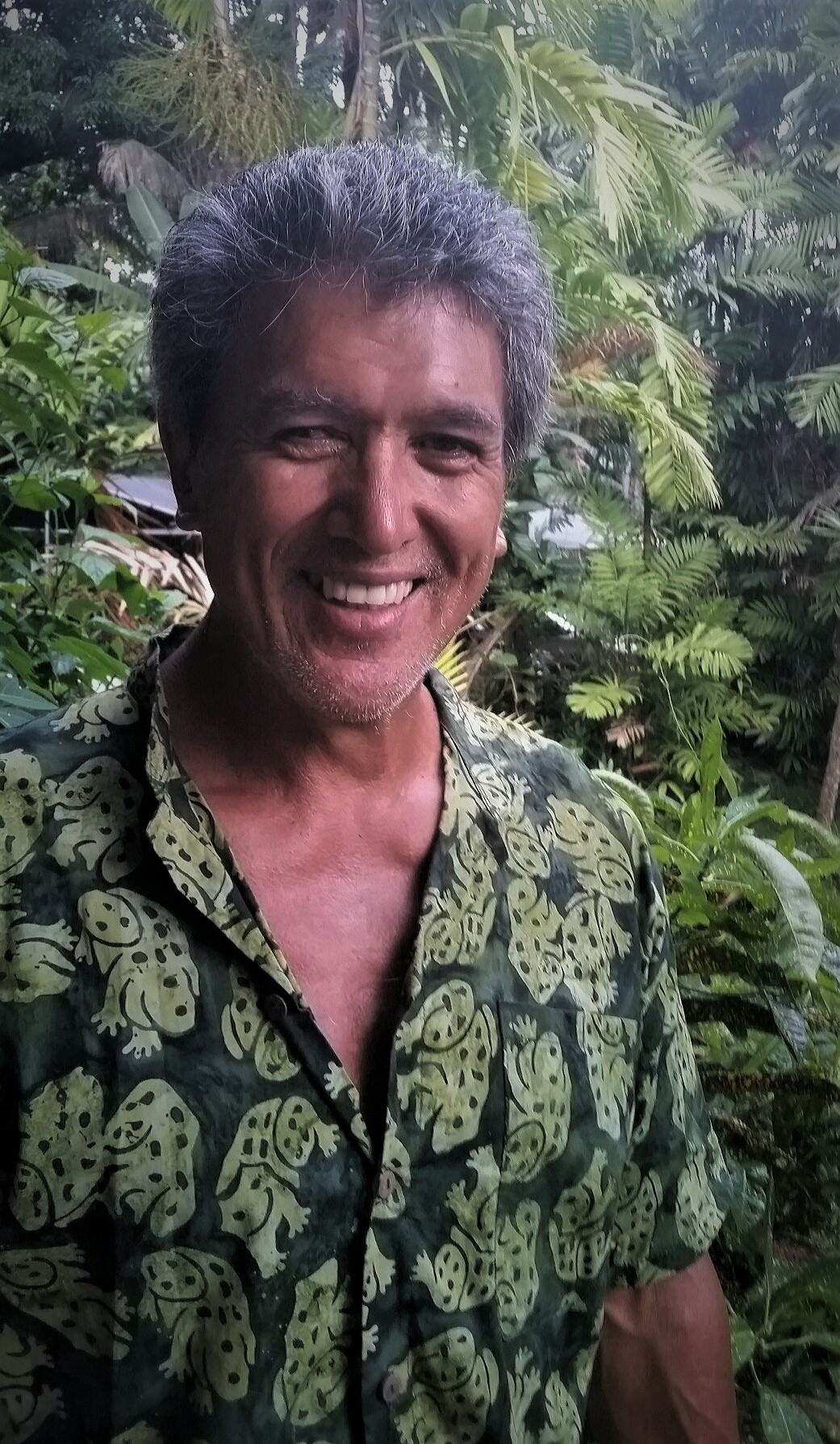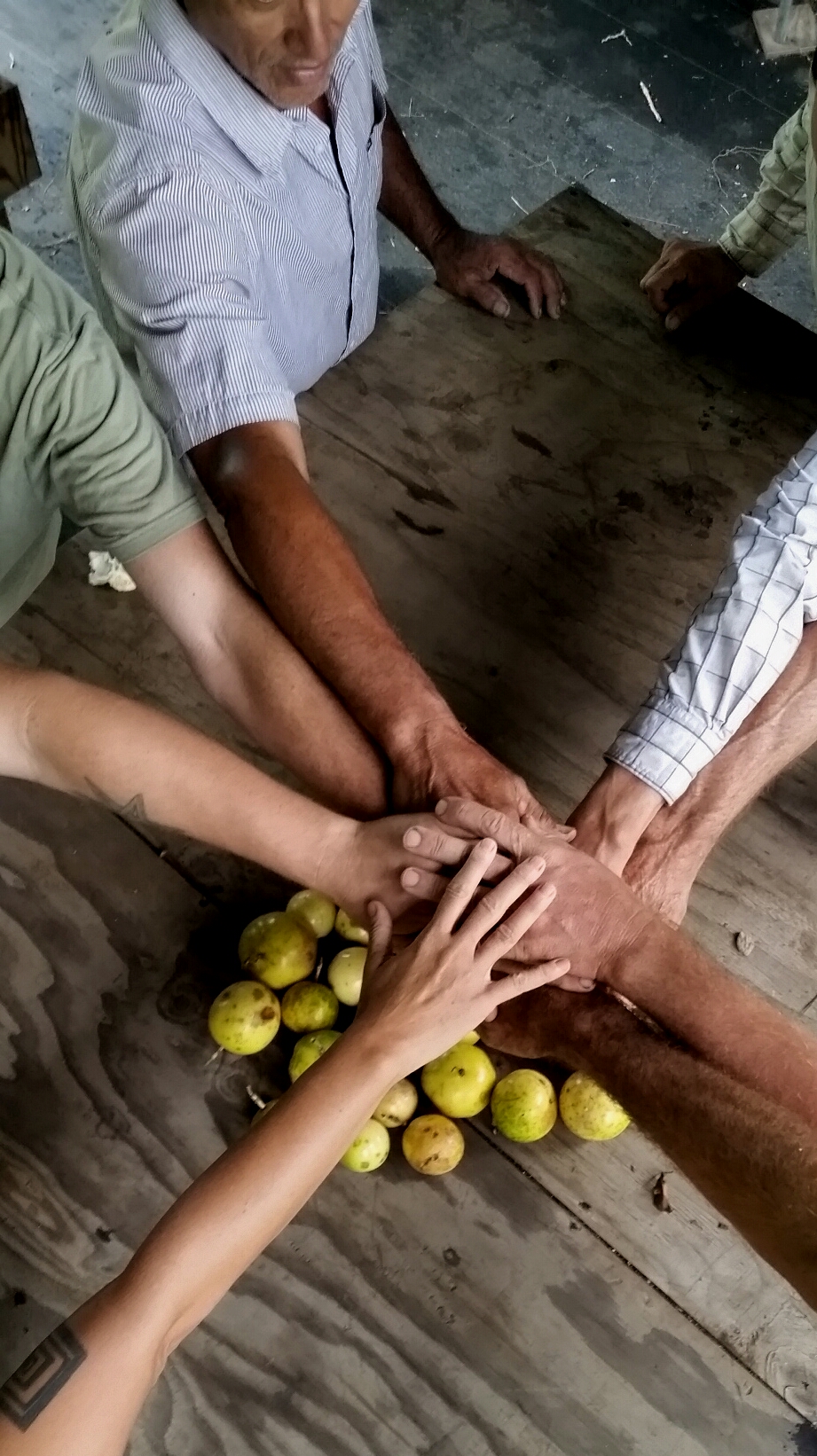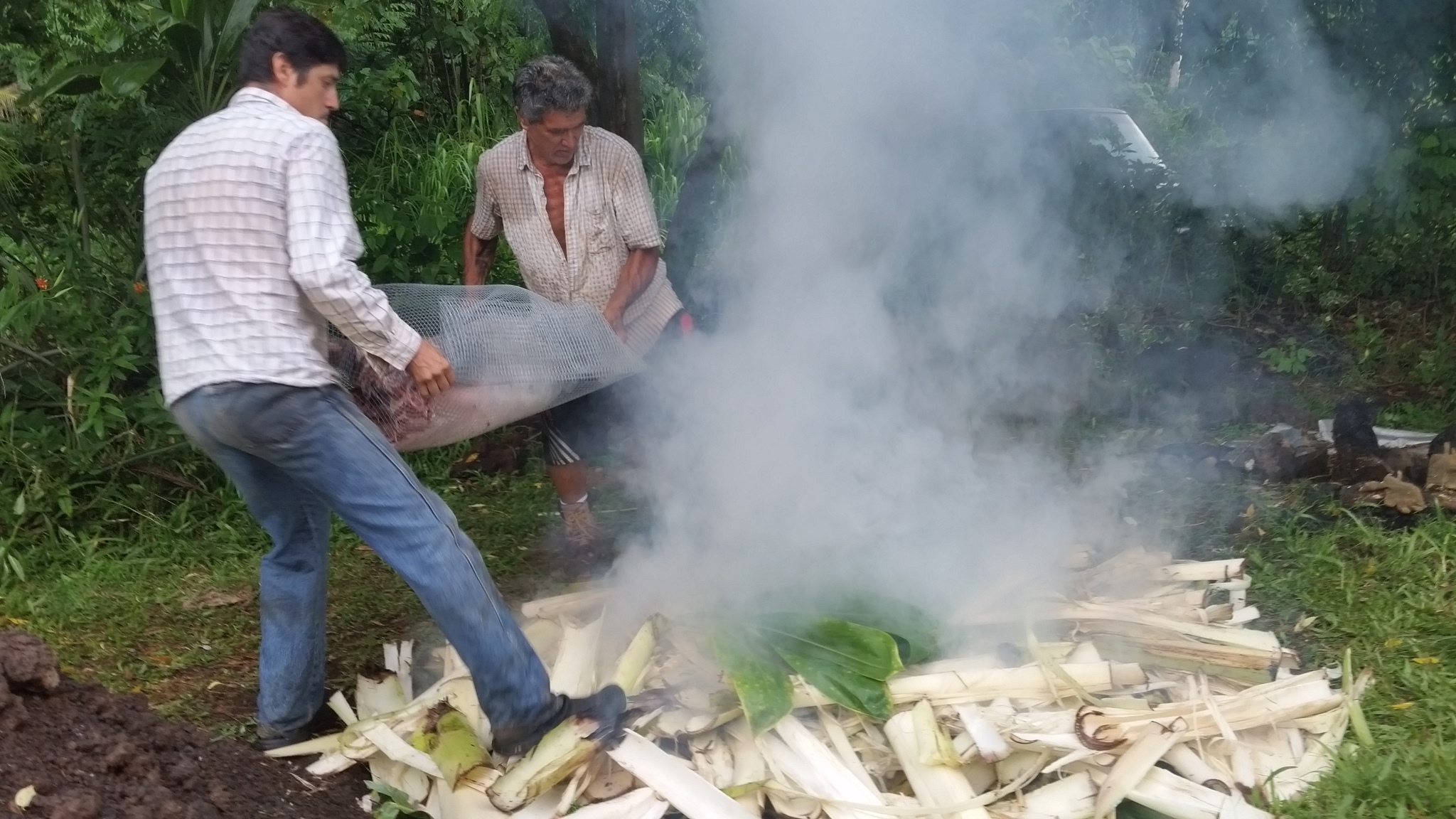7. Design from patterns to details: By stepping back, we can observe patterns in nature and society. These can form the backbone of our designs, with the details filled in as we go.
It was the full moon when the boar surrendered himself. It actually was the Harvest Full Moon, Friday the 13th of September 2019. This full moon in particular was publicized more than normal due to it’s unique aspects that had last occured in the year 2000, and the next one not happening again until 2049. Some might also catch the cheeky side note to this tale, if connected, that the year 2019 in Chinese astrology is the Year of the Boar. So why the “Harvest” full moon? Itʻs the full moon that occurs closest to the day of the autumnal equinox. It is on this day where our story begins. Mixing equal parts; -Jungle, -Our treasured ʻohana Uncle Crandall, -and Laulima, we get a Hawaiian Imu to talk about.

Crandall was born and raised in Hilo, Hawaii. He lived in Hilo until 1999 when he decided to move himself from a life he did not prefer, seeing that he was headed towards an undesired path. Crandall soon found himself living in lower Puna, on the Red Road. A volunteer opportunity lead him into the retreat center and community; Kalani Honua. He worked in the maintenance department, joining into a community of about 30 members at the time. Crandall found all ways possible to extend his volunteer time on the Kalani property. He thrived within the community from the day he arrived. Volunteering lead him to accept an employment offer in Maintenance. Crandall has been woven deep into the Kalani property and ʻohana ever since. If you know Kalani, then you know the heart of Uncle Crandall. Knowing the heart of Uncle Crandall is always a good story to tell.

Kālua: To cook in an underground oven
Kālua is a traditional Hawaiian cooking method. The Imu is the oven that is built underground. The large underground pit can bake, smoke, and steam large amounts of food at one time, including the 150 lb boar caught on the land. We called Laulima to create the imu with Uncle Crandall. Building and cooking the food in the imu will take two days.
5. Use and value renewable resources and services: Make the best use of nature’s abundance to reduce our consumptive behavior and dependence on non-renewable resources.
BOAR CAPTURING: With so much land that produces an abundant variety of continuous jungle food, boars are a common sight. These feral pigs have a big impact to our jungle forest ecosystem. “For the Hawaiian Island and its rain forest, feral pigs are an invasive species because they eat massive vegetation causing native plant extinction, as well as soil erosion and soil compaction in their tracks.” (Restoration and Reclamation Review). You can read more about this issue in Hawaii ~ LINKED HERE ~
ʻĀINA ABUNDANCE HARVEST

‘Ulu (Breadfruit)
Cassava (Yuka, Tapioca)
Kalo (Taro)
‘Olena (Turmeric)
Green Bananas
Green Papayas
UNEARTHING THE IMU
In the bottom of the pit, the fire begins with crumbled news paper as the kindle. Uncle Crandall ripped and crumbled the pages until he got distracted by an article about the Hawaiian icon, BJ Penn. A month ago, Penn had been knocked down in a fight at a local Pahoa bar not too far away.
Newspaper now read and shredded, the wood goes on top. A torch is placed in the middle -face down, loosely wedged in the center. It will be lit and replaced in the pile to start the fire when ready. For the wood, Crandall harvested Ohia logs from the property. He explained that he gathered two types; dried and fresh. The wetter logs get placed on top of the dry ones to create a slower burn and extend the fire. We are also making sure that we Obtain a Yield and implementing a STACKED FUNCTION with the imu by using the wet logs to create BIOCHAR that we will retrieve at the end.
Rocks are now placed on top of the wood. The selection of the rocks are important as these stones need to be able to hold an intense amount of heat and steam without exploding.
Uncle Crandall explained that rocks from the river is the best, however he retrieved these stones close by at a bay. “If selected from the ocean,” he instructed, “make sure you get the ones with the holes in them.” The porous stones are able to shatter less while holding the high heat with moisture.
SETTING THE FIRE
The fire has now started and is burning. Crandall makes sure it is burning evenly throughout the entire imu pit.
Once the imu heat is turned on high, the moisture needs to be added to create the steam. Banana stumps and leaves were freshly cut to create the next layer that will steam things up.
Pounding the fresh Banana stumps, we created a damp bedding that will be layered over the heated stones.
It has now been two hours since the imu was lit. Waiting for the wood and stone mound to collapse is the indicator Crandall has been waiting for. Once the collapse appears, the stones are now hot enough and the imu is ready for the wet vegetation bed on top to create steam. Crandall layers banana leaves first, then the bedding of pounded banana stumps.
11. Use edges and value the marginal: The interface between things is where the most interesting events take place. These are often the most valuable, diverse and productive elements in the system.
INTO THE ʻĀINA

Steam ready, the Puaʻa was carried over and placed on top, wrapped in chicken wire to help with the handling in and out of the imu.
Crandall also instructed us how to prepare the Hawaiian Ti Plant leaf to wrap the vegetables in for the imu. We removed the spine stem from the middle and then could tie the Ti leaves together.
The wrapped Ti leaf vegetables are placed around the pig in the center of the imu.
Another covering of Ti leaves are places over all the food. Crandall explains that the next layer is preferably burlap that has been soaked in water overnight. Not having any on property, we were able to obtain old towels and sheets that we soaked in water. This creates another layer of moisture for the imu. On top of the towles, a large tarp covers everything. The edges of the tarp are carefully covered with soil to seal in the steam and heat.
A final layer of soil is placed over the entire imu to contain the heat and moisture.
Sixteen hours later
COOKED FROM THE ʻĀINA
The next day, we gently remove the soil at the edge of the tarp and carefully pull back the tarp, sheets, and towles.
RECEIVING THE ABUNDANCE
UNEARTHING THE PUAʻA
EARTHING THE IMU
The imu is now cooling. Once cooled we will retrieve the ashes and biochar. The stones and soil will be replaced inside, and the ʻāina jungle will grow again on top in rapid speed. The imu pit now resting, until the next unearthing.
THE FEAST
3. Obtain a yield: Ensure that you are getting truly useful rewards as part of the work that you are doing.
MENU
GARDEN GREEN MEDLEY
Arugula, Mustard Greens, Amantath, Kale, Salad Greens
GERMAN ULU POTATO SALAD
Roasted Ulu with sweet and sour pickles, Garlic Chives, Katuk berries
~ IMU ROAST WILD BOAR ~
HAWAIIAN VEGETABLE AU GRATIN
Taro, Cassava, Ulu, Turmeric imu roasted, cooked in garlic and cream sauce
SAUTEED VEGETABLES
Cabbage, Kale, Amaranth, butter onions and garlic
DESSERT
Chocolate Peanut Butter Chia Pudding, glazed with Freshly Made Coconut Cream
































































Having read this I believed it was extremely informative.
I appreciate you spending some time and effort to put this article together.
I once again find myself personally spending way too much time both reading and commenting.
But so what, it was still worth it!